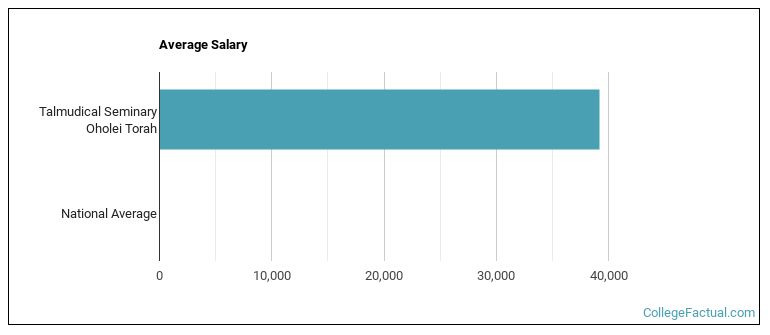 by our College Data Analytics Team
by our College Data Analytics TeamExplore the best ranked schools for the programs you are most interested in.
Talmudical Seminary Oholei Torah was not ranked in College Factual's Best Overall Colleges report this year. This may be because not enough data was available.
See all of the rankings for Talmudical Seminary Oholei Torah.
The acceptance rate at Talmudical Seminary Oholei Torah is 78%. That's higher than the rate at many schools, but still low enough to be considered somewhat selective. If you want to get in, you'll need good grades and to be able to show that Talmudical Seminary Oholei Torah is a good fit for you.
With a student to faculty ratio of 13 to 1, Talmudical Seminary Oholei Torah is about average in this regard as the nationwide rate is 15 to 1. While this does not translate directly to class size, it's a good indicator of how much time professors will have to spend with their students on a one-on-one basis.
Another measure that is often used to estimate how much access students will have to their professors is how many faculty members are full-time. The idea here is that part-time faculty tend to spend less time on campus, so they may not be as available to students as full-timers.
The full-time faculty percentage at Talmudical Seminary Oholei Torah is 73%. This is higher than the national average of 47%.
The freshmen retention rate tells us what percentage of first-year, full-time students choose to continue on to their sophomore year at a particular school. The rate at Talmudical Seminary Oholei Torah is 67%, which is about average when compared to the national rate of 68%.
When we say that a student has graduated on time, we mean that they have finished their bachelor's degree within four years. The on-time graduation rate at Talmudical Seminary Oholei Torah is 11%. That's lower than the national rate of 33.3%
Find out more about the retention and graduation rates at Talmudical Seminary Oholei Torah.
During the 2017-2018 academic year, there were 331 full-time undergraduates at Talmudical Seminary Oholei Torah.
The net price is calculated by adding tuition, room, board and other costs and subtracting financial aid.Note that the net price is typically less than the published for a school. For more information on the sticker price of Talmudical Seminary Oholei Torah, see our tuition and fees and room and board pages.

See which majors at Talmudical Seminary Oholei Torah make the most money.
Get more details about the location of Talmudical Seminary Oholei Torah.

Contact details for Talmudical Seminary Oholei Torah are given below.
| Contact Details | |
|---|---|
| Address: | 667 Eastern Pky, Brooklyn, NY 11213 |
| Phone: | 718-363-2034 |
| Website: | www.tsot.edu/ |
| Most Popular Majors | Bachelor’s Degrees | Average Salary of Graduates |
|---|---|---|
| Religious Studies | 47 | NA |
Footnotes
*The racial-ethnic minorities count is calculated by taking the total number of students and subtracting white students, international students, and students whose race/ethnicity was unknown. This number is then divided by the total number of students at the school to obtain the racial-ethnic minorities percentage.
References
More about our data sources and methodologies.